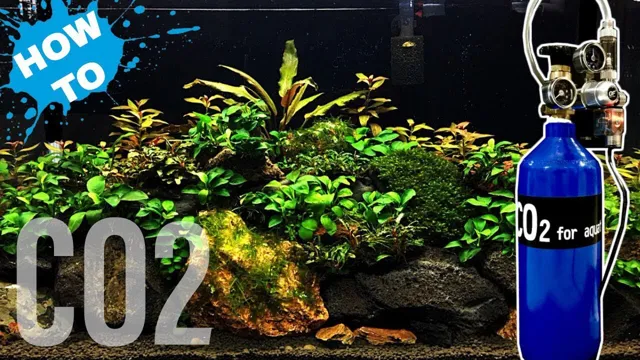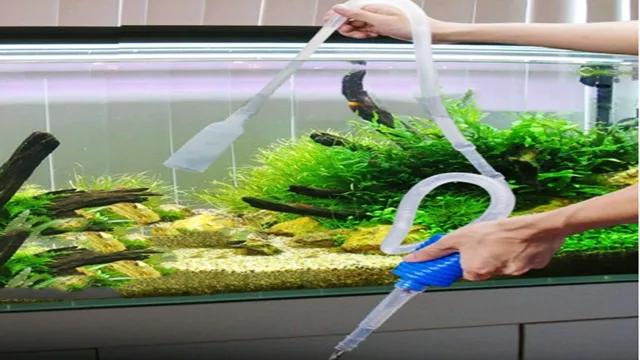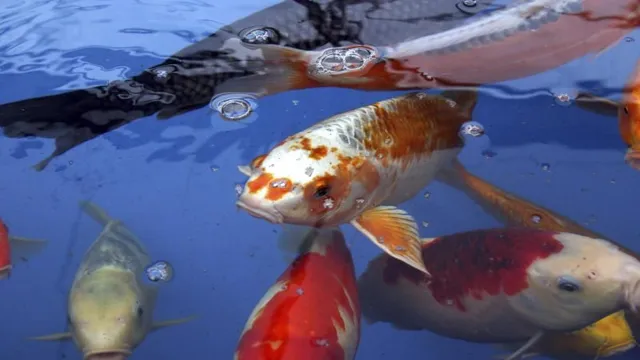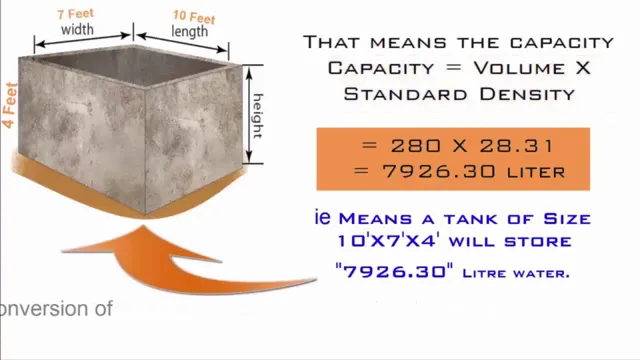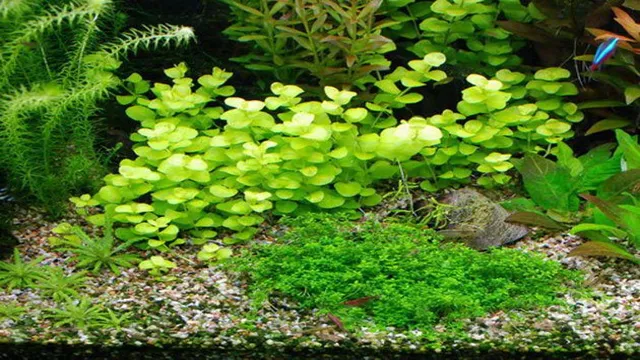If you’re looking to take your aquarium setup to the next level, adding CO2 can help to promote plant health and growth. But unless you’ve done it before, adding CO2 to an aquarium can seem like a daunting task. Don’t worry though – it’s actually pretty simple! In fact, it’s a lot like adding carbonation to a soda.
By following a few key steps, you can easily add CO2 to your aquarium and watch your plants thrive. So, grab a cup of your favorite beverage, sit back, and let’s dive into the world of aquarium CO2!
Why Add CO2 to Your Aquarium
If you’re an aquarium enthusiast, you’ll know that keeping your aquatic pets healthy and thriving can be a bit of a challenge. One way to help is to add CO2 to your aquarium. This essential gas is a vital element for many living organisms, including plants and fish.
CO2 helps to promote healthy plant growth, which in turn helps to balance and oxygenate the water. This is especially important for planted aquariums where plants need CO2 to photosynthesize and grow. By adding a CO2 system to your aquarium, you can ensure that your plants are receiving the necessary amount of CO2, which will result in healthier plants, clearer water, and overall better aquatic life.
So, if you want to take the step towards having a cleaner, greener, and healthier aquarium, consider adding CO2 to your setup.
Benefits of CO2
If you’re looking to create a thriving and vibrant aquarium, adding CO2 can provide numerous benefits. CO2, or carbon dioxide, is a crucial element that plants need to photosynthesize. By adding CO2 to your aquarium, you can promote the growth of aquatic plants, increase oxygen production and improve the overall health of your aquatic environment.
Additionally, adding CO2 can help reduce the buildup of harmful chemicals, such as nitrates and phosphates, which can cause algae blooms and harm aquatic life. With the right balance of CO2, you can create a stunning underwater world that will impress your guests and provide a healthy and natural environment for your aquatic plants and animals. Overall, adding CO2 to your aquarium can provide numerous benefits that will enhance the beauty and health of your aquatic environment.

Types of CO2 Systems
If you’re looking for a way to enhance the growth and vitality of your aquarium plants and fish, adding CO2 can be a game-changer. By introducing CO2 to your aquarium, you can provide essential nutrients that are often lacking in aquatic environments, resulting in healthier and more vibrant plant growth. There are a few different types of CO2 systems that you can use.
Pressurized systems are the most common, where CO2 gas is stored in a cylinder and released into the water through injection. Another option is a DIY system, which involves making your own CO2 generator using yeast and sugar. No matter which system you choose, make sure to monitor your CO2 levels to avoid over or underdosing your aquarium.
Overall, adding CO2 to your aquarium can provide numerous benefits, including increased plant growth, improved water quality, and a more natural and balanced aquatic ecosystem.
Choosing the Right CO2 System
If you’re looking to add CO2 to your aquarium, it’s important to choose the right system to ensure your plants and fish thrive. Firstly, consider the size of your aquarium and the type of plants you have. Smaller tanks may only require a simple setup, while larger tanks with high-demanding plants will need a more complex CO2 system.
Another important factor to consider is the type of diffusion method you’ll use. Common options include diffusers, reactors, and atomizers, each with their own unique advantages and disadvantages. Additionally, the type of CO2 cylinder or generator you choose is important to consider, as this will affect the efficiency and effectiveness of your system.
Be sure to do your research and consult with an expert if you are unsure which CO2 system is right for your aquarium. With the right system in place, you’ll be able to enjoy a healthy and thriving aquatic environment.
Determine Your Tank Size and Needs
When it comes to choosing the right CO2 system for your aquarium, it’s essential to determine your tank size and needs. Your tank size is a crucial factor that will affect the amount of CO2 needed for your aquarium. A general rule of thumb is to inject one bubble per second for every 20 to 30 gallons of water.
Therefore, for a small aquarium that holds around 5-10 gallons, you will need a small CO2 system that delivers a low amount of CO On the other hand, for a larger tank that holds 50-100 gallons, you will require a higher-powered system with a more substantial CO2 output. Additionally, you must consider the types of plants and animals you have in your aquarium. (See Also: How to Make a Semi-Aquatic Aquarium: Tips and Tricks for a Thriving Habitat)
Some plants require higher CO2 levels to thrive, while some fish may be sensitive to high CO2 concentrations. Therefore, choose a CO2 system that can meet your aquarium’s specific requirements to ensure your plants and fish thrive. So, take some time to assess your tank and its requirements before purchasing a CO2 system to make the right choice and keep your aquarium healthy.
Budget Considerations
When it comes to deciding on a CO2 system, budget is an important consideration. While it’s true that some systems can be quite costly, there are options that won’t break the bank. One thing to keep in mind is that a higher price tag doesn’t always equate to higher quality.
Depending on your needs, a simpler system may be just as effective as a more complex one. It’s also worth considering the long-term costs, such as maintenance and replacement parts. Don’t forget to factor in any additional equipment that you may need, such as regulators or solenoids.
Ultimately, it’s important to do your research and weigh your options carefully before making a decision. After all, the right CO2 system can make a significant difference in the success of your aquarium.
Installation Ease
Choosing the right CO2 system for your aquarium can greatly impact the ease of installation. Some systems require more intricate setups than others, so it’s important to consider your own level of knowledge and experience before making a purchase. If you’re a beginner, it may be beneficial to opt for a simpler CO2 system with straightforward guidelines for installation.
On the other hand, if you have more experience and want to customize your setup, a more complex system may be the way to go. Remember to research each system thoroughly and read reviews from other hobbyists to ensure you’re selecting the best option for your individual needs. By choosing the right CO2 system, you can make the installation process a breeze and set yourself up for success in maintaining a healthy and thriving aquarium.
Setting up Your CO2 System
Are you ready to add some plant life to your aquarium? One of the best ways to create a thriving ecosystem in your tank is by setting up a CO2 system. It may seem daunting at first, but with a little research and preparation, you can have your system up and running in no time. First, determine the size of your aquarium and the amount of CO2 needed.
Next, select your equipment – this includes a CO2 cylinder, regulator, diffuser, and tubing. Then, it’s time to install and set up your equipment, making sure to adjust the flow rate to a proper level for your tank. Finally, don’t forget to regularly monitor your CO2 levels and adjust as needed.
By setting up your CO2 system correctly, you can create a beautiful, thriving aquarium with lush green plants and happy fish. So what are you waiting for? Dive in and start your CO2 journey today!
Choose a CO2 Source
When it comes to setting up your CO2 system, choosing the right CO2 source is an important decision. There are several options available, including CO2 tanks, CO2 generators, and yeast reactors. CO2 tanks are a popular choice as they are a reliable and convenient way to supply carbon dioxide to your plants.
However, they do require regular refills and can be expensive in the long run. CO2 generators are a cost-effective alternative that uses natural gas or propane to produce carbon dioxide. On the other hand, yeast reactors are a DIY option that uses yeast to ferment sugar and produce CO
While they may be cheaper initially, their effectiveness is limited and requires frequent maintenance. Ultimately, the choice of CO2 source depends on your budget, level of expertise, and the size of your grow room. Consider all options before making a decision to ensure the best results for your plants.
Install CO2 Equipment
If you’re an aquarium hobbyist looking to enhance the health and growth of your aquatic plants, setting up a CO2 system is an essential step. Before installing your CO2 equipment, you’ll need to consider the size of your aquarium and the type and number of plants you have. You’ll also need to choose the appropriate CO2 regulator, diffuser, and bubble counter for your tank’s specific needs. (See Also: How to Draw a Realistic Aquarium Step-by-Step: A Beginner’s Guide)
Once you’ve selected your equipment, it’s time to install it properly. Start by attaching the regulator to your CO2 tank, making sure it’s securely fastened and the valve is closed. Next, connect the regulator to your diffuser and bubble counter, ensuring tight connections between all components.
Finally, place the diffuser at the bottom of the tank and adjust the CO2 flow rate to the correct level. With your CO2 system up and running, you’ll be amazed at the benefits it brings to your aquarium, from increased plant growth to a more vibrant, healthy ecosystem.
Test CO2 Levels and Monitor pH
If you’re setting up a CO2 system for your aquarium, it’s essential to test the CO2 levels regularly and monitor pH. This will help ensure that your plants are getting the right amount of CO2 and that your fish are staying healthy. To test the CO2 levels, you can use a CO2 drop checker or a pH controller with a probe.
The drop checker will change color based on the CO2 levels in the water, while the pH controller will automatically adjust the CO2 injection to keep the pH at a stable level. You’ll also need to monitor the pH levels to ensure that they stay within the range that’s safe for your fish. A sudden drop in pH can be a sign of high CO2 levels, which can be harmful to your fish.
A pH monitor will give you accurate readings so that you can adjust your CO2 injection accordingly. It’s important to remember that a CO2 system is just one part of maintaining a healthy aquarium. You’ll also need to monitor water parameters such as ammonia, nitrite, and nitrate levels, and make regular water changes.
With proper care and attention, your plants and fish will thrive in a CO2-boosted aquarium!
Maintaining Your CO2 System
Maintaining your CO2 system is crucial when it comes to keeping a healthy and thriving aquarium. First and foremost, it is important to regularly check your CO2 levels to ensure they are within the optimal range for your particular aquarium setup. You can use a drop checker or pH test kit to monitor your levels.
Another important step is to regularly clean your diffuser and check your tubing for any leaks. Additionally, it is important to regularly replace your CO2 canister and refill it as needed to ensure a constant and reliable source of CO It is also recommended to have a backup canister on hand in case of emergencies.
Along with regular maintenance, it is important to properly set up your CO2 system in the first place, following manufacturer instructions and ensuring all connections are secure and airtight. By taking these steps and staying on top of maintenance, you can ensure your CO2 system is operating at its best and your aquarium is flourishing.
Refilling CO2 Cartridges
Maintaining your CO2 system is important to ensure its longevity and maximum efficiency. One aspect of this is refilling CO2 cartridges. It’s essential to understand the proper method to do so correctly.
First, make sure to wear gloves and safety glasses while handling CO2 cartridges. Start by unscrewing the empty cartridge and checking its condition. If it’s damaged, dispose of it properly.
Next, securely attach the refill adapter to the opened valve of the CO2 cylinder and firmly screw a new cartridge into the adapter. Make sure the cartridge is all the way in and you hear a hissing sound indicating the transfer of gas. Carefully release the gas from the cartridge into the cylinder, and once the cartridge empties, remove it from the adapter.
Lastly, check for any leaks before closing the cylinder valve and resetting the CO2 system. By following these steps, you can refill your CO2 cartridges safely and efficiently, ensuring your aquarium or planted tank will continue to thrive.
Adjusting CO2 Levels
Maintaining Your CO2 System One of the most crucial aspects of keeping your planted aquarium healthy is maintaining proper CO2 levels. CO2 is an essential nutrient for aquatic plants, and maintaining the right levels can help ensure optimal plant growth, and a thriving, healthy aquarium ecosystem. One way to do this is to regularly adjust CO2 levels to ensure they remain within the optimal range of 20-30 ppm. (See Also: How to Clean Rocks in Aquarium: A Step-by-Step Guide for Sparkling Clean Rocks)
It is vital to monitor pH levels consistently because pH levels can indicate issues with CO2 levels. If you are unsure about how to adjust your CO2 levels, consider investing in an automated CO2 management system that can help maintain optimal levels. Additionally, ensure that your CO2 equipment is functioning correctly and that CO2 levels are consistent throughout the aquarium.
Proper maintenance of your CO2 system will not only help your plants grow, but it will also keep your fish healthy and happy.
Conclusion
In conclusion, introducing CO2 to your aquarium is like adding the perfect seasoning to your favorite dish – it enhances the overall flavor and brings a whole new level of depth to the experience. With careful consideration, proper tools and techniques, and a bit of patience, you too can become a master chef of aquarium CO So go out there and experiment, have fun, and watch as your aquatic plants thrive and your fish swim with joy!”
FAQs
What is the importance of CO2 in an aquarium?
CO2 is crucial for the growth and survival of aquatic plants in an aquarium. It helps in photosynthesis and provides oxygen to fish.
How much CO2 should be added to an aquarium?
The ideal CO2 concentration in an aquarium is between 20-30 ppm. However, it may vary based on the size of the tank, the number of plants and fish, and the lighting system.
What are the different methods to add CO2 to an aquarium?
There are various ways to add CO2 to an aquarium like using pressurized tanks, DIY CO2 setups, liquid CO2 supplements, and CO2 generators.
Is it necessary to inject CO2 into an aquarium?
It depends on the type of plants and lighting in the aquarium. If you have high-tech plants and intense lighting, then CO2 injection is necessary for optimal growth.
How can I maintain the CO2 levels in my aquarium?
You can maintain the CO2 levels in your aquarium by regularly monitoring the concentration, adjusting the injection rate, using a pH controller, and ensuring proper water circulation.
Can high levels of CO2 harm fish in an aquarium?
Yes, high levels of CO2 can harm fish. It can cause suffocation and even death. Therefore, it is essential to maintain the CO2 concentration within the safe limit.
What are the signs of low CO2 levels in an aquarium?
The signs of low CO2 levels include slow plant growth, algae growth, and yellowing or wilting of leaves.

